Top Image: A “Map of the Pacific” featuring Hawaii published in the Illinois Evening Bulletin in 1911. Courtesy of the Library of Congress.
In July of 1908, the Great White Fleet—President Theodore Roosevelt’s impressive armada of 16 dazzling white battleships under the command of Rear Admiral Robley “Fighting Bob” Evans—stopped at Honolulu, Hawaii on its global tour. Crowds gathered to witness what was to be America’s answer to Britain’s dominant sea power in a new age of imperial expansion. Hawaii, then a territory of the United States and recognized as the “crossroads of the Pacific” for its position between the West Coast and the United States’ colonial and territorial possessions in the Philippines and Guam, was a natural stopping point for the fleet, reflecting America’s expanding geographical reach.
There was just one problem: the Great White Fleet had nowhere to dock in Honolulu.
The fleet was forced to drop their anchors in open water near Honolulu as there was not enough room for all 16 ships in the city’s harbor. Even then, there was insufficient space for coaling near Honolulu without difficult maneuvers; four of the ships had to travel 70 miles to the Island of Maui to refuel, while others were only able to squeeze one-by-one into the Honolulu harbor. Ironically, “only eight miles away [was] one of the finest natural harbors in the world, a place of shelter just now more important to the United States from a military and commercial standpoint than any harbor it [currently] possesses,” The Sun reported on Pearl Harbor after the fleet’s visit. Pearl Harbor, then the site of a basic Naval station equipped with the barest of necessities for maintaining a naval presence, was an ideal spot for safeguarding the fleet, but it was in need of improvement—primarily dredging to deepen the channels allowing access to the harbor and a dry dock for repairing vessels.
“The Atlantic fleet…came face to face here with one of the hard facts of urgent need—that is, the immediate improvement of Pearl Harbor,” The Sun emphasized.By the early 1900s, Americans, representatives from Hawaii, and even members of the military recognized Pearl Harbor as an important component for America’s ascendancy in the Pacific, potentially as “indispensable as Gibraltar to the British Empire.”
If Pearl Harbor was critical for projection of imperial and naval power, why was the Great White Fleet unable to dock there? By 1919, Pearl Harbor would have a fully-functioning and established naval base, but not before a Japanese victory in the Russo-Japanese War finally urged the Navy to recognize Hawaii’s importance for American strategy in the Pacific.
Before the United States formally annexed Hawaii, the natural harbor (Wai Momi) at the mouth of the Pearl River on Oahu factored into American plans for the islands. Wealthy, White Americans sought to establish an imperial presence through missionary and economic activity as early as the 1830s, and in 1870, General John McAllister Schofield (namesake of the current Schofield Barracks in Wahiawa) suggested that the United States secure access rights to Pearl Harbor. In 1875, the United States gained exclusive access to the harbor for coaling and repair through the Reciprocity Treaty with the Kingdom of Hawaii. Later in 1884, ruler King David Kalakaua granted the United States permission to use the harbor for shipping and economic purposes through a treaty renewed again in 1887, the same year that White American sugar plantation owners and their militia forced Kalākaua to accept the “Bayonet Constitution’’ which granted more voting rights to white Americans in Hawaii.
In 1893, White elites who wanted the United States to annex Hawaii for economic benefits and six supportive citizens of the Kingdom of Hawai’i orchestrated a coup (with the assistance of soldiers and sailors aboard the USS Boston anchored in Honolulu) to overthrow Queen Lili’uokalani, Kalākaua’s sister and successor. The following year, Sanford Dole—a resident of Hawai’i born to missionary parents and a practicing lawyer—became the President of the Republic of Hawai’i, setting the stage for annexation.
When America acquired the Philippines and Guam after the conclusion of the Spanish-American War in 1898, Hawaii gained more strategic importance.
Not only was it a source of raw resources for America’s growing empire in the Pacific, but it also became recognized as a convenient half-way point between the mainland and the Pacific possessions—which also created renewed interest among the Navy in Hawaii’s harbors. Despite intense debate among Americans and politicians over the issue of annexation, in 1900 Hawaii officially became a territory of the United States.
But for nearly 10 years after annexation, Pearl Harbor remained merely a coaling station for ships moving across the Pacific. The problem was not that many did not think Pearl Harbor had potential to become an important naval site. Rather, a series of bureaucratic and logistical obstacles and blunders hindered the necessary improvements to make Pearl Harbor a naval base.
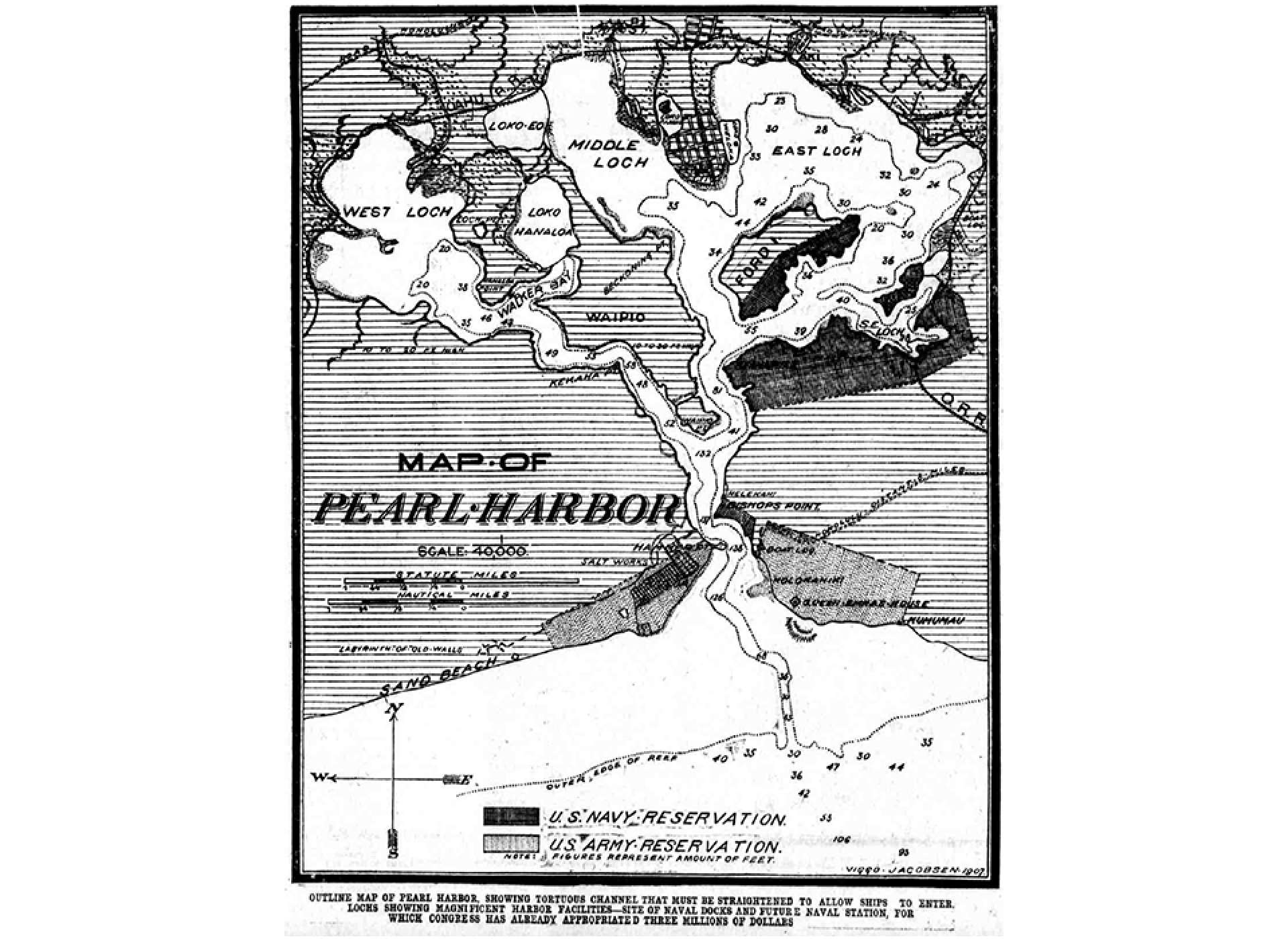
A map of the construction challenges for improving Pearl Harbor from the Evening Bulletin in 1911. Courtesy of the Library of Congress.
The first challenge was securing the land necessary for expansion. Commander John F. Merry (then in charge of the Naval Coal Depot in Honolulu) believed in the significance of building a naval station at Pearl Harbor, but most of the surrounding land belonged to the Bernice Pauahi Bishop Estate which was overseen by a series of trustees. In September of 1899, Merry wrote to the trustees asking for the going price for the property, but was rebuffed.
When approached by Merry, another landowner shot down an offer. “No! I am absolutely opposed to the United States getting control of my land!” he responded. Merry requested assistance from the Chief of the Bureau of Equipment of the Navy in land acquisition because unless something was done, “I fear [the land] will be exchanged or disposed of in some way” beyond the government’s control, leaving the Navy without adequate land for the expansion of Pearl Harbor. Ultimately, Merry was able to initiate eminent domain hearings under Hawaiian law and issue General Order #530, transforming Pearl Harbor from a coal depot to a naval station.
But despite Merry’s emphasis on the importance of Pearl Harbor and the initiation of dredging to deepen the main channel by 1902, little progress was made on making the site suitable to accommodate larger ships. It wasn’t that there was disagreement on Hawaii’s strategic role. Businessmen in Hawaii believed that further construction at Pearl Harbor would benefit trade and economic development on the islands, while others recognized the necessity of a more developed Naval presence for American ascendancy in the Pacific.
Newspapers across the country in the early 1900s ran editorials and articles expressing their support for a suitable base. “The Hawaiian Islands are most fortunately situated for strategic purposes,” the Brooklyn Standard Union noted. “It is an outpost which not only will be of great value in defending our eastern possessions but which will enable this country to keep the ships of an enemy at a respectable distance from the Pacific Coast and the Panama Canal.” However, in 1900, Pearl Harbor was in no shape to be recognized by the Navy as a potential strategic site. Not only were the lochs through which ships could enter crooked and difficult to maneuver, but a dry dock for ship repair was needed for the Harbor to be truly functional.
And it’s not that Congress disagreed; it was simply budgetary bureaucracy getting in the way of earmarking the amount of funding needed for improvements to Pearl Harbor. Congress appropriated money for the Navy to use for construction, but it was not enough to fully complete all of the necessary upgrades. Until, that is, the outcome of the Russo-Japanese War in 1905 shocked the world and threatened to shift power dynamics in the Pacific. In 1904, Japanese and Russian naval forces clashed over competition for expanding power in East Asia, resulting in a surprising victory for the Japanese. Japan was now a potential competitor for the United States in Asia.
As historians Donald and Lyndall Landauer explain, though fighting amongst the Russians and the Japanese did not occur anywhere near Hawaii, “because it [Hawaii] was in the Pacific Ocean, it was close enough to make some people a bit anxious.” In July of 1905, Congressman George A. Loud of Michigan argued that “Hawaii is in a peculiar position…in the case of war with an eastern power, the United States must defend these islands.” And with a Japanese victory over Russia, this seemed more likely than ever.
Congressional representative from Hawaii, Jonah Kalanianaole, appeared before the House Committee on Naval Affairs on January 29, 1908 to argue for the completion of the dry dock at Pearl Harbor. “Gentlemen of the committee, this Government has for 10 years neglected the safeguard of preparing a naval base in the mid-Pacific,” he stated. “Our relations with other nations are such today that it would be inexcusable neglect of the responsibility of Congress to the nation to postpone the beginning of this work another year.” Not only was the completion of Pearl Harbor as a Naval base a necessity for protecting Hawaii; it was necessary for protecting the nation.
Later in 1908, Congress finally approved $3,000,000 to straighten the channel and complete the dry dock to establish Naval Station Pearl Harbor. Of course, Pearl Harbor was still incomplete when the Great White Fleet arrived that summer, but by that point construction was underway. On November 11, 1909 President William Howard Taft announced during a conference with Secretary of State Meyer that “Pearl Harbor shall be the key to the Pacific…the radial point for offense and defense of the United States’ operations in the East.” Pearl Harbor would be the nation’s “new and striking move on the international chessboard, [giving] the United States domination of the Pacific Ocean.”
A series of construction challenges and flooding to the drydock delayed completion of the upgrades to Pearl Harbor, but by 1911, the first armored cruiser, the USS California, carrying dignitaries including none other than Sanford Dole and Queen Lili’uokalani, was the first major warship to enter the Harbor. By 1919, the drydock was complete and Naval Station Pearl Harbor was functioning.
-

Opening of Dry Dock No. 1 at Pearl Harbor, 1919. Courtesy of the Library of Congress.
-

Opening of Dry Dock No. 1 at Pearl Harbor, 1919. Courtesy of the Library of Congress.
-

Opening of Dry Dock No. 1 at Pearl Harbor, 1919. Courtesy of the Library of Congress.
-

Opening of Dry Dock No. 1 Pearl Harbor 1919. Courtesy of the Library of Congress.
Though Franklin D. Roosevelt would not order the Pacific fleet from the San Diego naval base to Pearl Harbor until 1940 in response to growing tensions with Japan, newspapers during the early twentieth century recognized the central role of Pearl Harbor in international diplomacy and strategy. The August 14, 1912 edition of The San Francisco Call featured an editorial drawing readers’ attention to the increasing importance of Hawaii and Pearl Harbor in Pacific affairs.
“Pearl harbor will be a magnificent rendezvous in the mid-Pacific for the American navy…by the creation of this great naval force in the ocean the American mainland will practically command the Pacific against any Asiatic or other power.”
Stephanie Hinnershitz, PhD
Stephanie Hinnershitz is a historian of twentieth century US history with a focus on the Home Front and civil-military relations during World War II.
Cite this article:
MLA Citation:
APA Citation:
Chicago Style Citation:
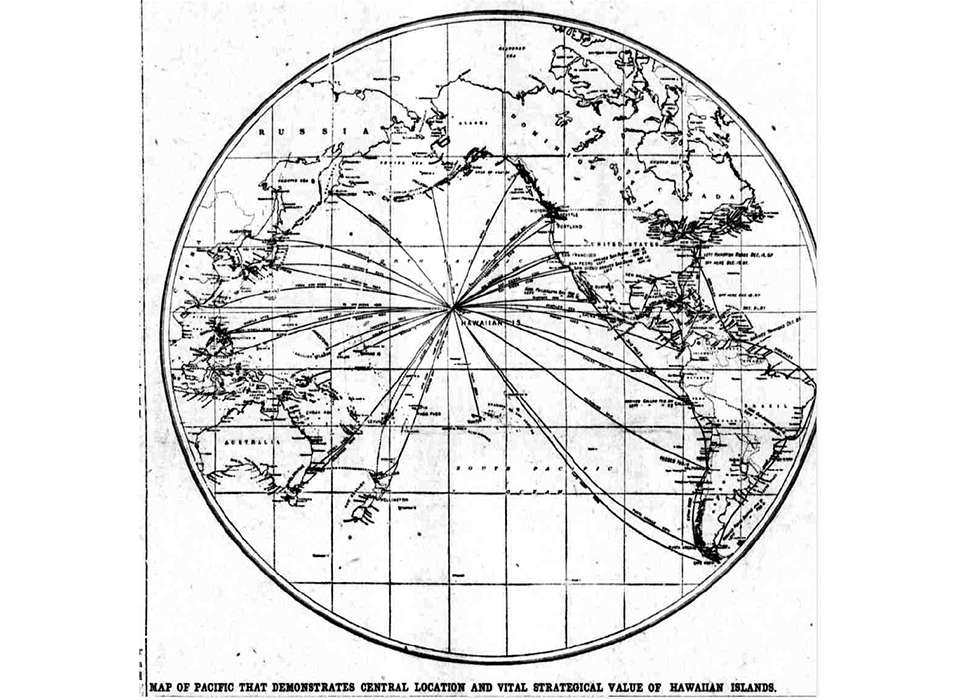
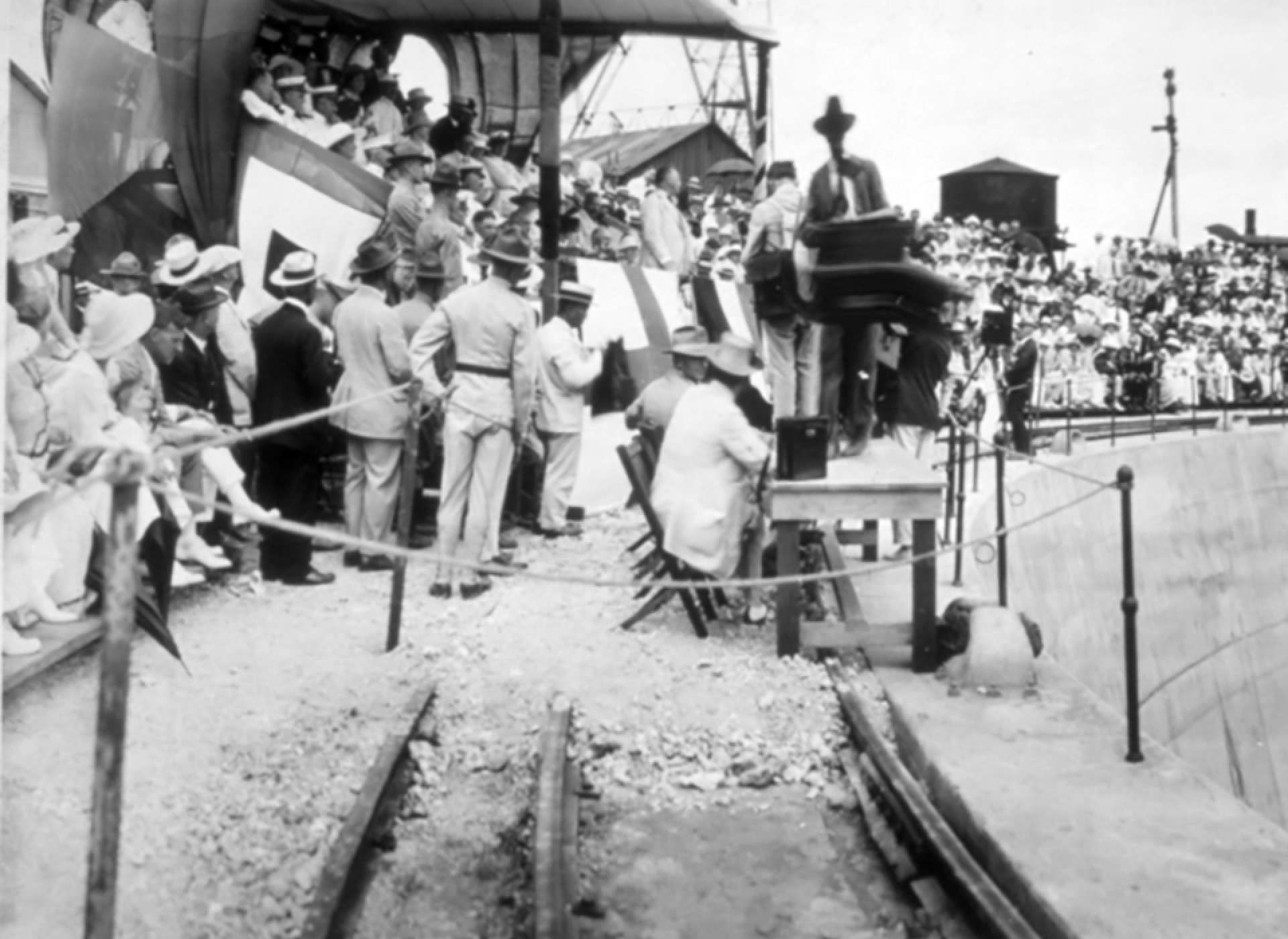
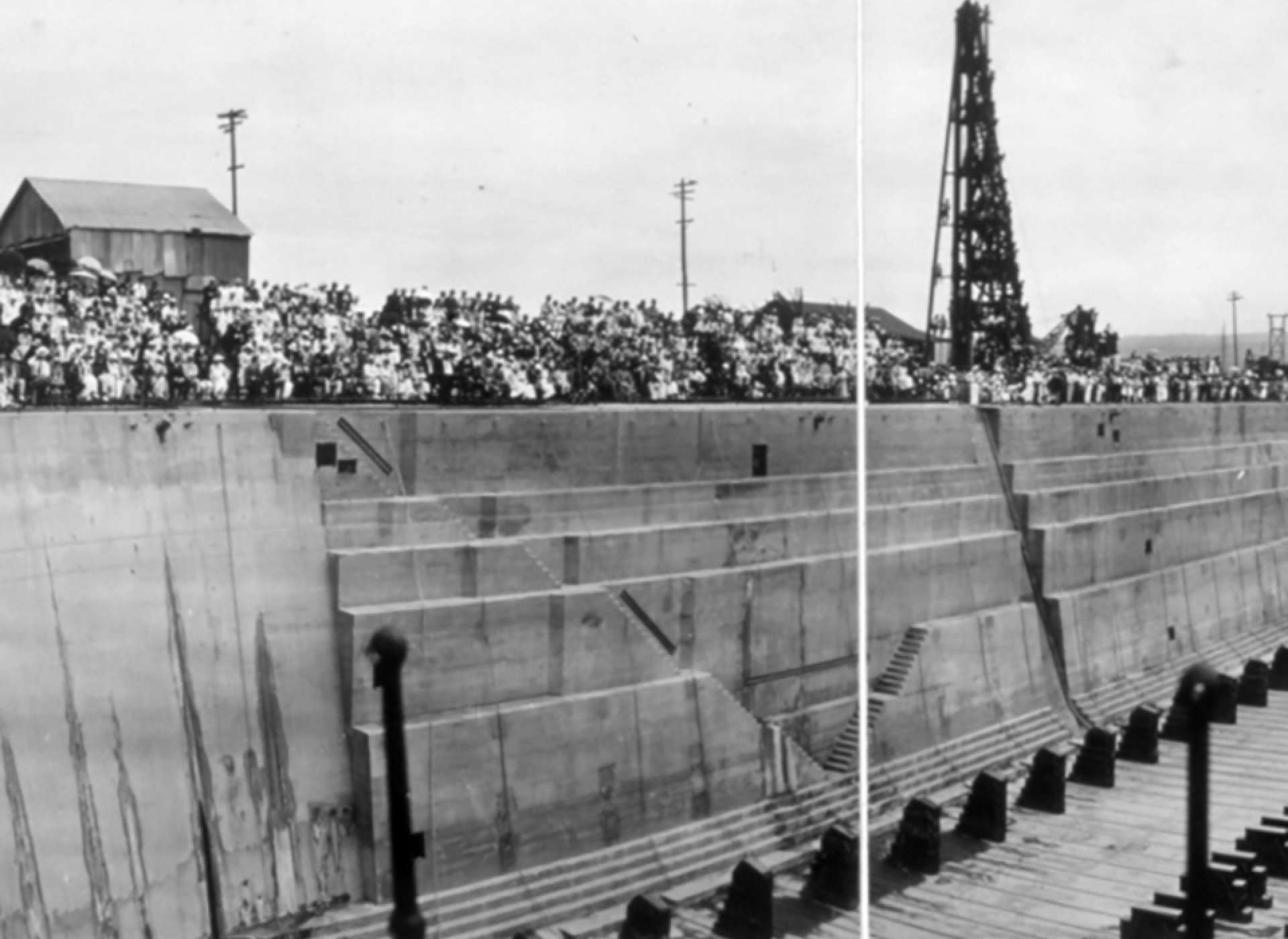
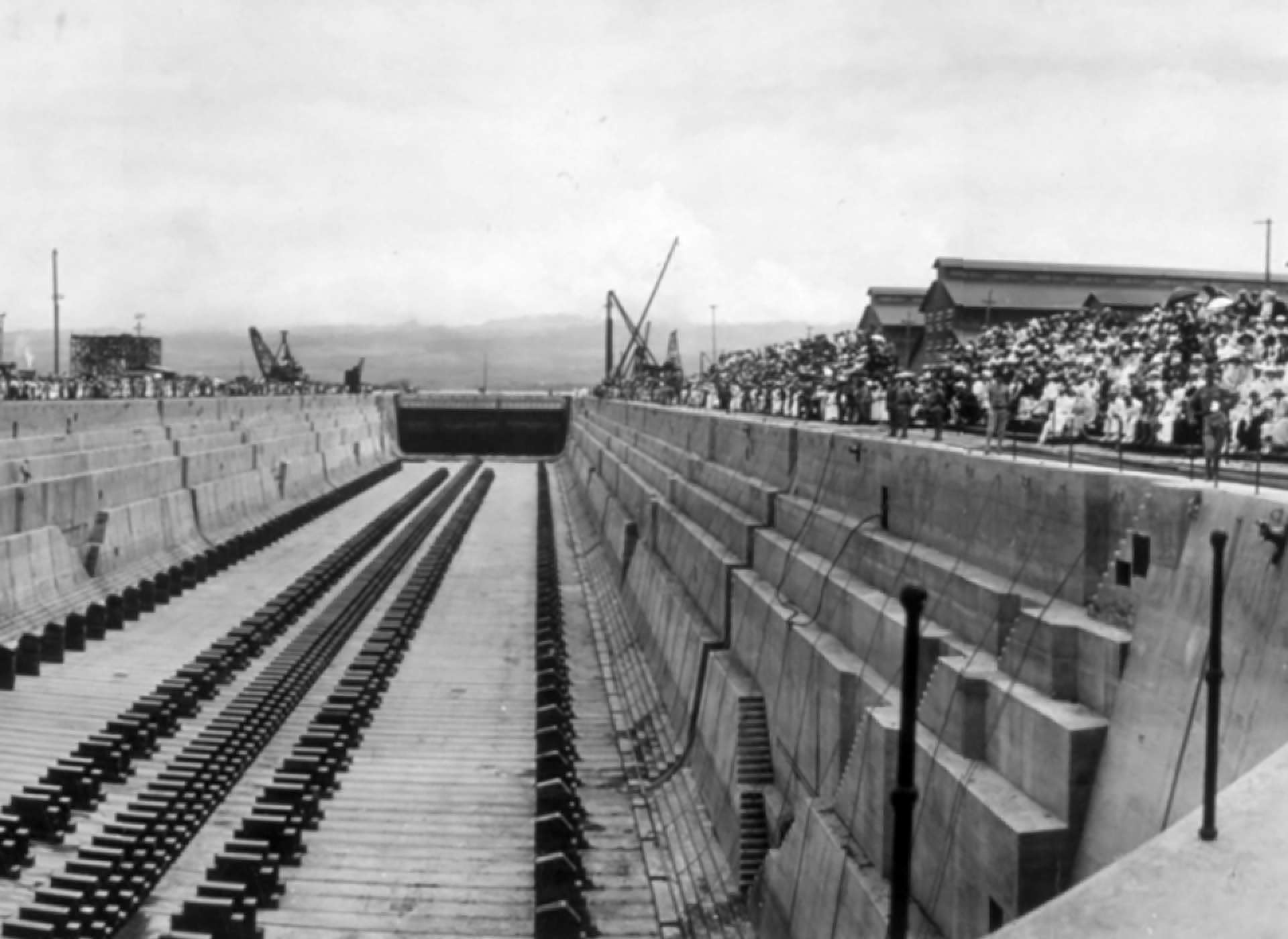
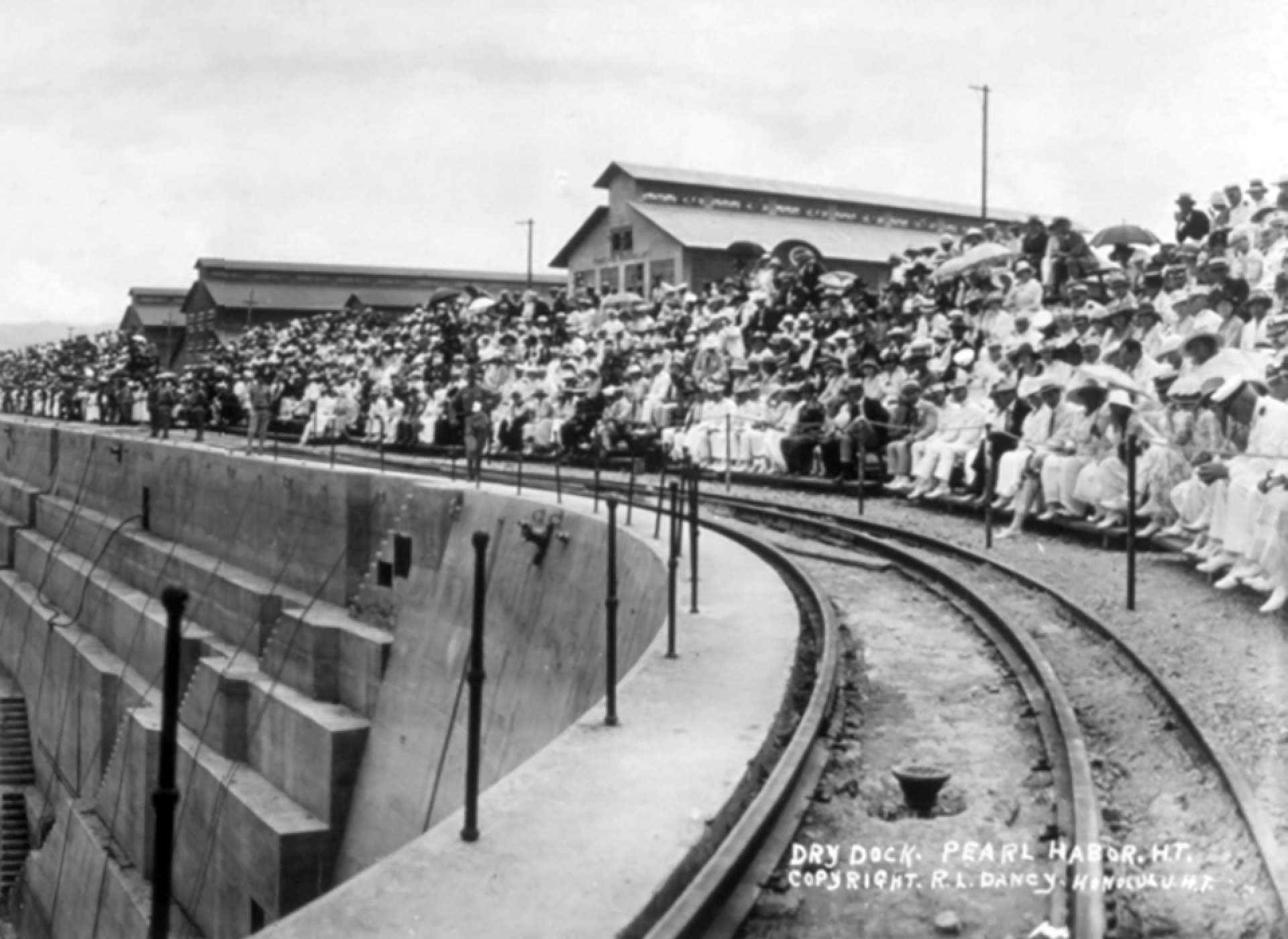





![Max Fuchs, New York City cantor, sings as Rabbi Sydney [sic] Lefkowitz, Richmond, VA, conducts the first Jewish services from Germany.](/sites/default/files/styles/max_650x650/public/2025-10/image1.jpg)


